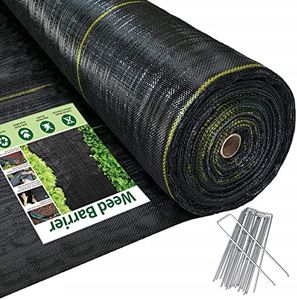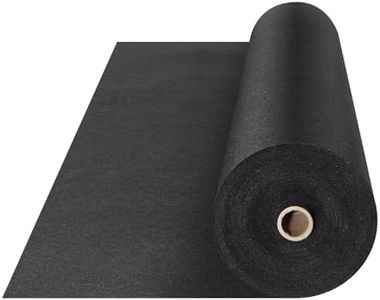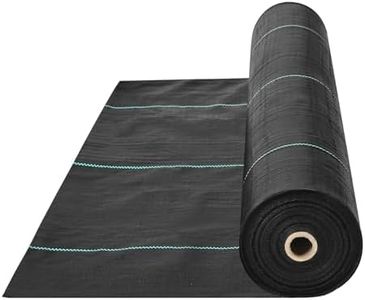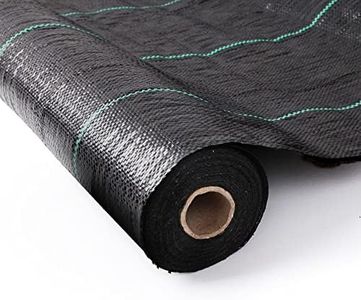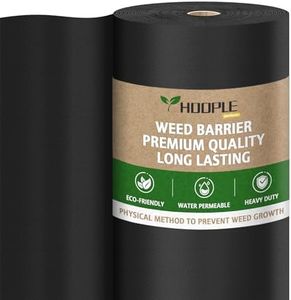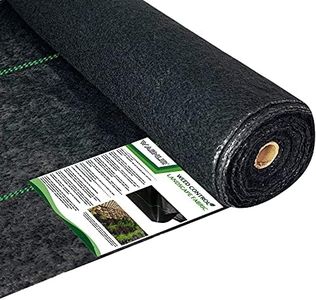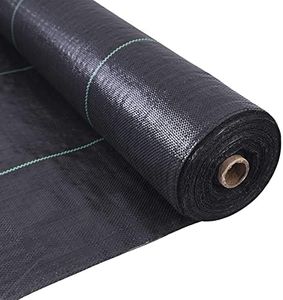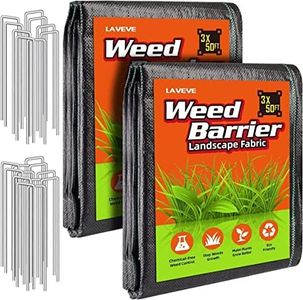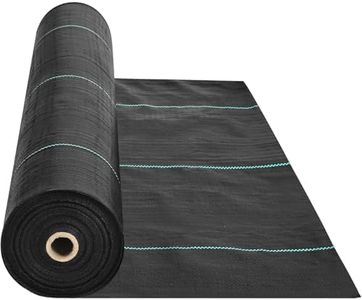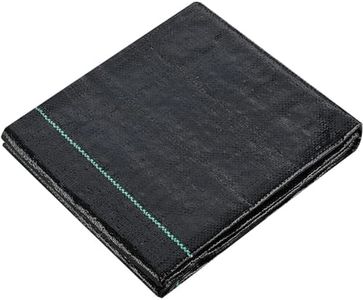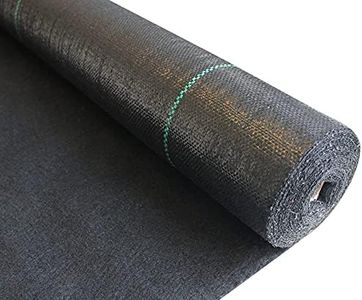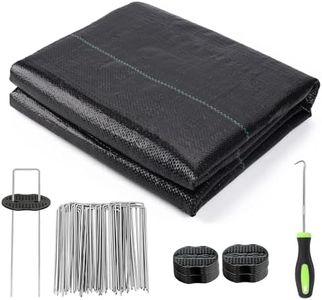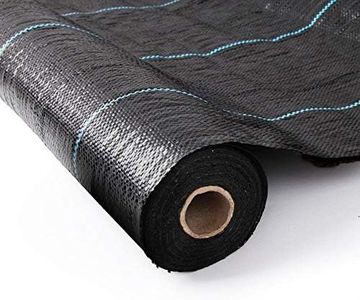We Use CookiesWe use cookies to enhance the security, performance,
functionality and for analytical and promotional activities. By continuing to browse this site you
are agreeing to our privacy policy
10 Best Weed Barrier Fabric
From leading brands and best sellers available on the web.Buying Guide for the Best Weed Barrier Fabric
Choosing the best weed barrier fabric for your needs involves understanding how these fabrics work to prevent unwanted plants while supporting the health of your garden or landscaping. Weed barrier fabrics are designed to block sunlight and stop weed growth, but they also need to let water and air reach the soil. Your choice should consider the type of area you’re covering, how long you expect the barrier to last, and whether you’ll want to plant above or through the fabric in the future.Material TypeWeed barrier fabrics are typically made from woven, non-woven, or spun materials, most commonly polypropylene or polyester. The material type is important because it affects durability, permeability, and ease of installation. Woven fabrics are strong and good for pathways or areas with heavy foot traffic, while non-woven types are often thicker, more opaque, and better for long-term weed control under rock or mulch. Spun fabrics are lightweight, easy to handle, and suitable for around plants. Consider where and how you’ll use the fabric to choose the most appropriate material.
PermeabilityPermeability refers to how well water and air can pass through the fabric to reach the soil. This is crucial because desirable plants and soil organisms need moisture and oxygen. High-permeability fabrics are better for garden beds where you want your plants to thrive, while lower-permeability options are suitable for paths or underneath hardscapes where keeping everything dry matters more. Think about whether plant growth and soil health are key priorities in the area you’re covering.
Thickness and WeightThe thickness or weight of the fabric, often listed in grams per square meter (gsm) or ounces per square yard, determines its strength, durability, and effectiveness at blocking light. Thicker fabrics last longer and block more weeds but can be harder to cut and handle. Lighter fabrics are easier to work with and better for short-term or seasonal use. Choose thicker, heavier fabrics for high-traffic, permanent areas, and lighter ones for gardens or spots you plan to change frequently.
UV ResistanceUV resistance means how well the fabric withstands sunlight without breaking down. This is important if parts of the fabric will be exposed to the sun, as UV light can cause some materials to become brittle and tear. Fabrics with good UV resistance last longer outdoors, especially if not fully covered by mulch or soil. Pick this feature if the barrier will be exposed, or if you want a longer-lasting solution.
Ease of InstallationSome fabrics are easier to roll out, cut, and anchor than others, which can make your project smoother and faster. Softer, lighter fabrics are usually easier to work with in garden beds and around plantings, while thick and stiff fabrics might require special tools or more effort. If you’re working on a large or complex area, or if you’re new to these kinds of garden projects, consider a fabric known for easy handling.
BiodegradabilityBiodegradable weed barriers are made from natural materials that break down over time and enrich the soil. This is valuable if you're looking for an eco-friendly solution and don’t need very long-term weed prevention. However, these products will need to be replaced more often. Choose biodegradable options for short-term use or if you want to avoid introducing plastics into your landscape.
